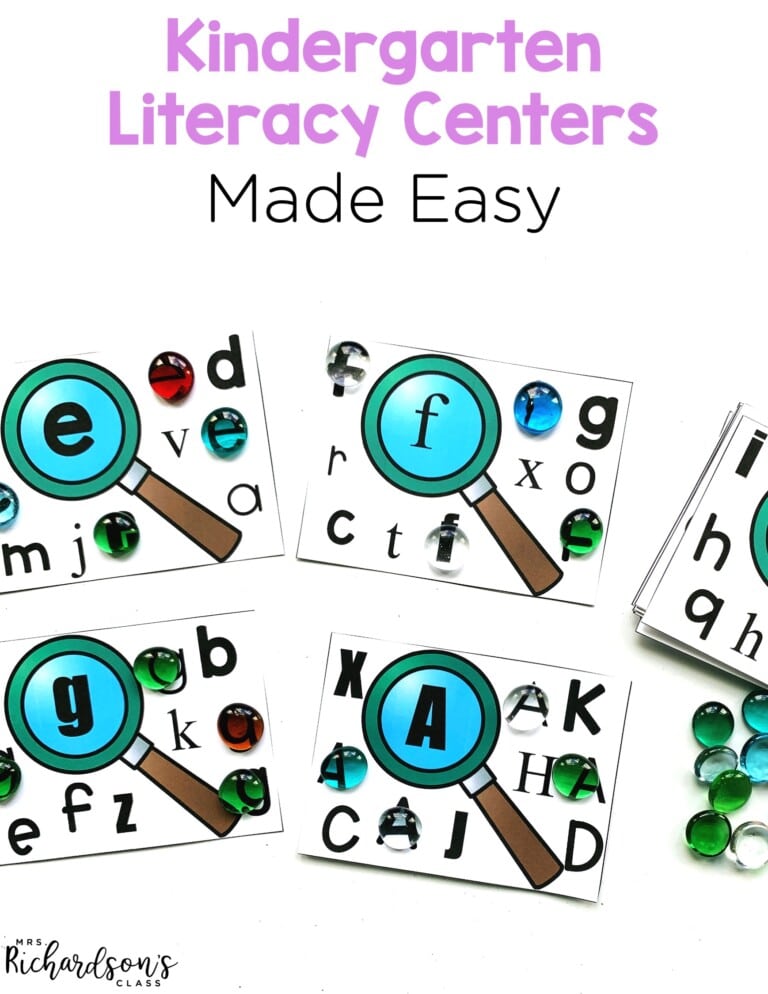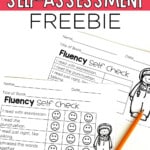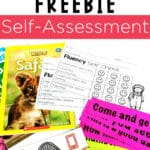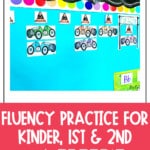

Have you ever had a student struggle with reading comprehension? Maybe a student can read with a high accuracy score, but just can’t seem to grasp what the text is telling them. I sure have! When I put all the pieces together, I realized that my students needed more practice with reading fluency. As soon as we started doing fluency practice and fluency self-assessments, I saw a big difference!
Because I want you to see the same success with your readers, I created this fluency self-assessment for you to try with your students!
Fluency has three basic elements: automaticity, accuracy, and prosody.
These are big words to basically say that fluent readers sound like their talking voices. They sound like they are talking, don’t have long pauses, and can change the expression in their voices.
This fluency self-check is designed to give your little readers practice and encouragement as they work to build their reading fluency. There are several ways you can use this fluency self-assessment in your classroom. You can have students fill it out weekly during guided reading. You can also have students read a book from their independent reading box and complete an assessment once per week during independent reading time.
There are two versions of this fluency self-assessment. For the blank option, you can make a comment or have students do a checkmark if they did it well. If a student needs to work on that area, they can make a plus sign. I also included a happy, straight, and sad face version that’s more appropriate for younger readers.
Students love getting to be the teacher, so I will also let them do these fluency self-checks on each other during literacy stations occasionally. Just a fun way to switch it up! Fluency self-checks help our readers focus more on what the text is actually saying so they can understand the meaning.
If you want to find more ways to practice and assess fluency, I have an entire blog post on that HERE! It walks you through three ways to assess fluency and four ways to practice.
Let’s make tracking fluency super fun and easier for you! Not only does the resource include fluency practice, but it includes data pages for student data folders and a bulletin board display to help motivate students. Check it out today to make progress monitoring a breeze!
I personally used this system in my classroom and had excellent results. My students loved the incentive, and I loved watching their reading fluency improve throughout the year in a visible way.
Once I incorporated explicit fluency practice at the guided reading table, I saw my struggling readers improve drastically. Remember that accuracy and fluency go hand-in-hand towards boosting reading comprehension. Give it a try and let me know how it goes!

Want to use the latest research to boost your readers during small groups? This FREE guide is packed with engaging ideas to help them grow!

I’m a K-1 teacher who is passionate about making lessons your students love and that are easy to implement for teachers. Helping teachers like you navigate their way through their literacy block brings me great joy. I am a lifelong learner who loves staying on top of current literacy learning and practices. Here, you’ll find the tools you need to move your K-2 students forward!


| Cookie | Duration | Description |
|---|---|---|
| cookielawinfo-checkbox-analytics | 11 months | This cookie is set by GDPR Cookie Consent plugin. The cookie is used to store the user consent for the cookies in the category "Analytics". |
| cookielawinfo-checkbox-functional | 11 months | The cookie is set by GDPR cookie consent to record the user consent for the cookies in the category "Functional". |
| cookielawinfo-checkbox-necessary | 11 months | This cookie is set by GDPR Cookie Consent plugin. The cookies is used to store the user consent for the cookies in the category "Necessary". |
| cookielawinfo-checkbox-others | 11 months | This cookie is set by GDPR Cookie Consent plugin. The cookie is used to store the user consent for the cookies in the category "Other. |
| cookielawinfo-checkbox-performance | 11 months | This cookie is set by GDPR Cookie Consent plugin. The cookie is used to store the user consent for the cookies in the category "Performance". |
| viewed_cookie_policy | 11 months | The cookie is set by the GDPR Cookie Consent plugin and is used to store whether or not user has consented to the use of cookies. It does not store any personal data. |



One Response
This looks great! It will be very helpful for my students! 🙂
Lisa
Learning Is Something to Treasure